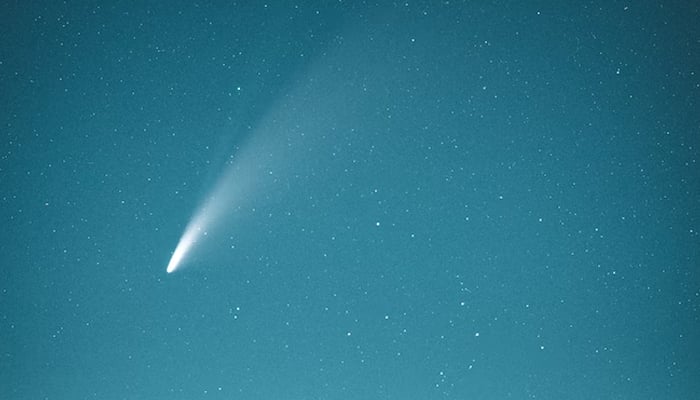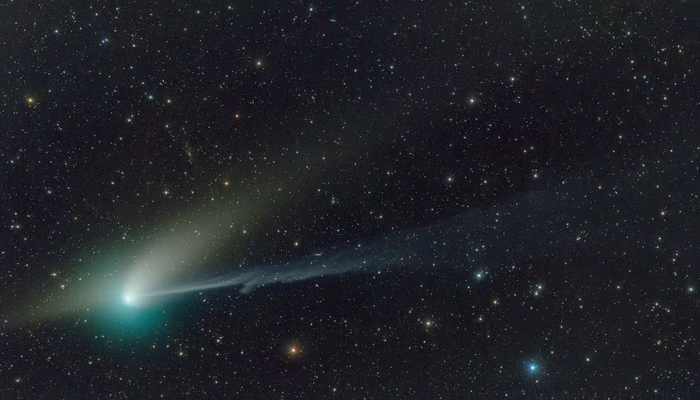Comet may brighten up evening sky in 2024, astronomers say
Comets are also regarded as "dirty snowballs" by astronomers, which are made up of ice, dust and rocks
March 12, 2023

The Comet C/2023 A3 (Tsuchinshan-ATLAS) is predicted to brighten up the sky in 2024 and will be visible to the naked eye, which was seen in the last month of February while the Asteroid Terrestrial-impact Last Alert System (ATLAS) was surveying the sky using the 0.5-m f/2 Schmidt reflector telescope operated at the Sutherland Observatory in South Africa.
The comets are also regarded as "dirty snowballs" by astronomers, which are made up of ice, dust and rocks at our solar system's outer edge. The comet melts down as they come closer to the sun releasing the steam of dust and gas forming a tail as it travels forward.
Every year, dozens of comets are spotted by astronomers all around the world. The recent comet was the Green Comet which passed by the Earth earlier last month.

Earlier, A3 was not given importance but as its orbit was determined it was known that this comet — with magnitude 18.7 — was noticed on January 9 by the Purple Mountain Observatory in China.
Why is it Important?
According to the data, the comet's orbit is expected to bring it near to the earth and the Sun likely in September or October 2024.
It will be mesmerising occurrence for humans as such things have not occurred for so long.
The last comet which brightened up the sky was in 1997 named Comet Hale-Bopp which left its effect on people's memory. As it is being said that it will be a great comet similar to 1997, however, it would be early to predict its magnitude of brightness. Yet, people are expecting it to be a great experience.
What do we know Comet A3?
The data seems to suggest that this comet completes its orbit around every 80,000 years. It is currently between the orbits of Jupiter and Saturn and will be closest to the sun — perihelion — on September 28, 2024. It will be visible to the Earth while passing the Sun and will likely vanish in October.
The A3 is faint and cannot be observed without a large telescope which will stay faint for the coming months. If it sticks with its natural course of development, it would be visible in the evenings via small telescopes, even with binoculars and the naked eye till the expected date of September.
Scientists and experts are still in the phase of studying it more deeply to predict its nature and further course.
Generally, Comets are not easy to predict and vanish earlier than expected.











